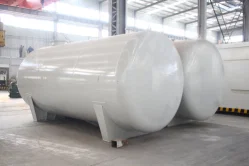Types of Fuel Tanks
2024-05-25
A fuel tank is a container for storing fuel, typically used in various vehicles, machinery, or stationary equipment. Here’s a brief overview of the key aspects of fuel tanks:
Types of Fuel Tanks
1. Automotive Fuel Tanks: Used in cars, trucks, and motorcycles.
2. Aviation Fuel Tanks: Found in airplanes and helicopters.
3. Marine Fuel Tanks: Installed in boats and ships.
4. Industrial Fuel Tanks: Used in generators, machinery, and for storage purposes in industries.
Materials
Fuel tanks can be made from different materials depending on their application:
- Steel: Durable and commonly used in automotive applications.
- Aluminum: Lightweight and corrosion-resistant, often used in aviation.
- Plastic: Lightweight and resistant to corrosion, used in modern cars.
- Composite Materials: Used in high-performance applications like racing.
Design Considerations
1. Capacity: Determined by the vehicle’s range requirements and space availability.
2. Shape: Designed to fit specific vehicle designs and maximize space utilization.
3. Safety Features: Includes features like baffles (to reduce sloshing), anti-explosion systems, and proper venting.
4. Compliance: Must meet regulatory standards for safety and environmental impact.
Fuel Types
- Gasoline
- Diesel
- Jet Fuel
- Biofuels
- Hydrogen
Maintenance and Issues
- Leakage: Regular inspection for cracks or corrosion.
- Contamination: Ensuring the tank is free from water or debris.
- Wear and Tear: Checking for signs of wear in older tanks, especially in marine and industrial applications.
Innovations
Recent developments include the use of advanced materials for lighter and more durable tanks, integration of electronic fuel management systems, and designs that better accommodate alternative fuels like hydrogen.
Fuel tanks play a critical role in the efficient and safe operation of various vehicles and equipment, and their design and maintenance are crucial for optimal performance.



